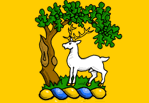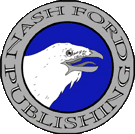 |
 |
|||
|
|
Winnersh
was originally one of the four liberties of the old parish of Hurst. It
was called a 'liberty' rather than a manor because it was under the
direct jurisdiction of the Bishop of Salisbury. It was his personal
chase in the Bearwood Walke of
Windsor Forest where he brought his
guests out hunting from Sonning
Palace. By the time the bishops sold
Sonning in the 16th century, their Winnersh estate had already been
broken up into Sindlesham Manor and Hurst Wynhurst which was attached to
Hurst Manor. Wynhurst, or Winnersh, means 'Water Meadow Wood' reflecting
its position on the banks of the River Loddon, although the main
settlement is the ribbon development that grew up on the higher ground
further along the main road between Reading and
Wokingham. Now called
the Reading Road (or the A329), this was originally known as King
Street, a name that was adopted by the settlement itself by the 18th
century. It consisted of a Post Office and the Pheasant Pub and a few
other houses like Kingstreet Farm, Winnersh Lodge, Winnersh Grove and
Winnersh Farm, immediately east of Winnersh Crossroads. It was really
centred on the, now hardly noticeable, dog-leg crossroads beneath the
motorway flyover. Winnersh Lodge was the dower house to Newland House in
Arborfield and was the home to Emma widow of the Reading banker, John
Simonds, after his death in 1881. Winnersh became part of the
ecclesiastical parish of Bearwood in 1846. The North Downs Railway was
laid just north of the village in 1849, but Winnersh Station, then known
as 'Sindlesham and Hurst Halt' wasn't built until 1910. It was as a
direct result of this that the village as we know it today was built
during the subsequent decade. There was a huge expansion to the west of
the crossroads, with houses down Robinhood Lane too, that joined
Winnersh to the little hamlet of Merril Green, now Merryhill Green, on
the Old Forest Road to Binfield which has all but disappeared in this
area. At
the west end of Winnersh stands, not only the Showcase Cinema, but
Loddon Bridge an important crossing point and meeting place in times
past, on the border between the Earley region of Sonning parish and the
Winnersh area of Hurst. In 1191, when King Richard the Lionheart went
off on Crusade, he left the country in the control of his chancellor,
William Longchamp, Bishop of Ely. However, already unpopular, his
subsequent actions led to the Barons, under Hugh Nonant, Bishop of
Coventry and egged on by Prince
John, calling upon him to attend what
was essentially a trial, a great open-air gathering in the meadows
adjoining Loddon Bridge, at Winnersh, on 5th October that year.
Longchamp shut himself up in the Tower of London instead, but was
besieged and later sent into exile.
|
|||
| © Nash Ford Publishing 2015. All Rights Reserved. | ||||



